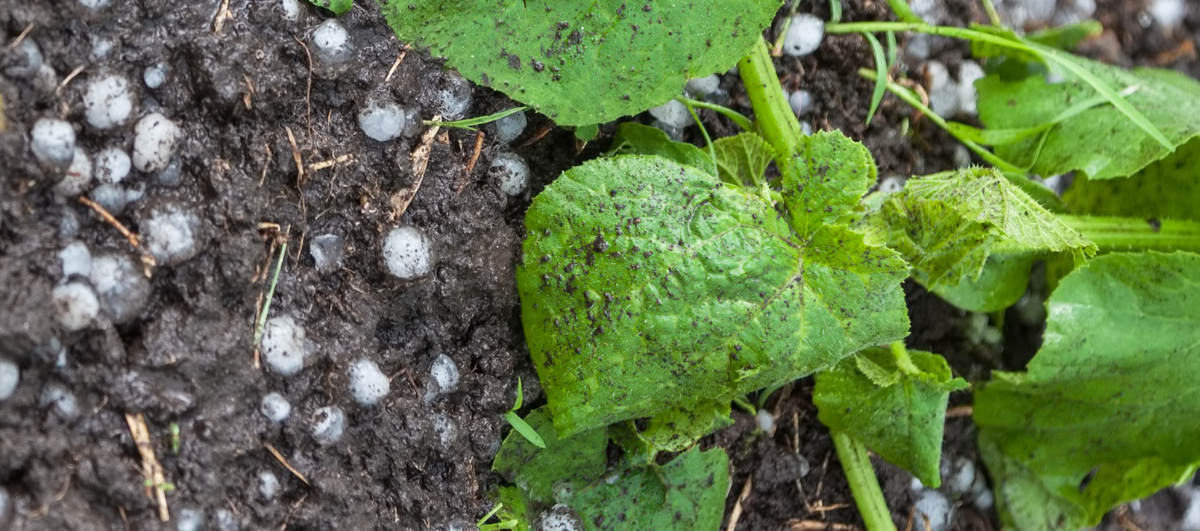Severe weather events such as hailstorms, tornadoes, and frost can have a significant impact on the food manufacturing industry. From crop destruction to disrupted transportation and storage, these weather phenomena pose a challenge to the production and availability of food. In this blog post, we will explore the various stages of the food production cycle and examine how severe weather events affect each stage. By understanding these impacts, we can develop strategies to mitigate the effects and ensure a stable food supply chain.
The Impact of Hailstorms on Crop Production
Hailstorms are a common occurrence in many agricultural regions. The forceful impact of hailstones can cause substantial damage to crops, resulting in yield losses and reduced quality. For instance, temperate fruit crops like apples, peaches, plums, and cherries are particularly vulnerable to bruising injuries caused by small to medium-sized hailstones. This leads to a decrease in crop quality and market value. Moreover, even short episodes of hail can cause severe injury to a wide range of crops, including maize and wheat, further impacting food production.
Tornadoes and their Effects on Transportation and Storage
Tornadoes are known for their destructive power, and their impact extends beyond immediate physical damage. They can disrupt transportation infrastructure, making it difficult to move harvested crops from farms to processing facilities or distribution centers. Damage to roads, bridges, and rail lines hampers the smooth flow of goods, leading to delays and potential spoilage. Tornadoes can also damage storage facilities, compromising the quality and safety of stored food products. Proper measures must be taken to prevent spoilage and contamination, ensuring that the food reaches consumers safely.
Frost and its Influence on Packaging and Production
Frost is a significant concern for food manufacturers, especially those dealing with perishable goods. Freezing temperatures can damage packaging materials, affecting the integrity and shelf life of the products. Additionally, frost can harm crops during the production stage. For example, frost can destroy delicate blossoms on fruit trees and prevent pollination, resulting in reduced yields. To mitigate these risks, manufacturers must invest in appropriate packaging materials and implement preventive measures to protect crops from frost damage.
Positive Impacts
Water Availability and Crop Resilience While severe weather events often bring negative consequences for food manufacturing, certain weather phenomena can also have positive impacts. Adequate rainfall resulting from thunderstorms or tropical systems can provide much-needed water for irrigation, boosting crop growth. Additionally, some crops exhibit resilience to specific weather conditions. For instance, certain varieties of wheat can withstand hailstorms, allowing for continued production even after severe weather events. Understanding these positive aspects can help us develop strategies to capitalize on favorable weather conditions for food manufacturing.
Conclusion
As an operations manager, it’s crucial to prioritize weather risk management in your strategic plan. Severe weather events are not just possible; they’re a certainty. Growing and maintaining a robust operation requires the anticipation and understanding of these weather risks. With innovative weather forecasting services, your business can stay one step ahead, ensuring the safety and quality of your products while saving on costs and potential storm damage. Take the first step today, and invest in advanced weather risk management services.
“The only safe ship in a storm is leadership.” – Faye Wattleton
Summary
In this blog, we’ve explored how weather risk management can protect industries from significant losses. Severe weather events, such as frost and hailstorms, can significantly impact food manufacturers, affecting everything from crops to packaging. However, with adequate measures, we can minimize these risks and even capitalize on certain weather conditions to boost productivity. The key takeaway is the importance of proactive weather risk management, which can be achieved through innovative weather forecasting services. This approach not only ensures product quality and safety but also saves industries from the costs incurred due to severe weather damage. It’s time to weather the storm with weather risk management.




